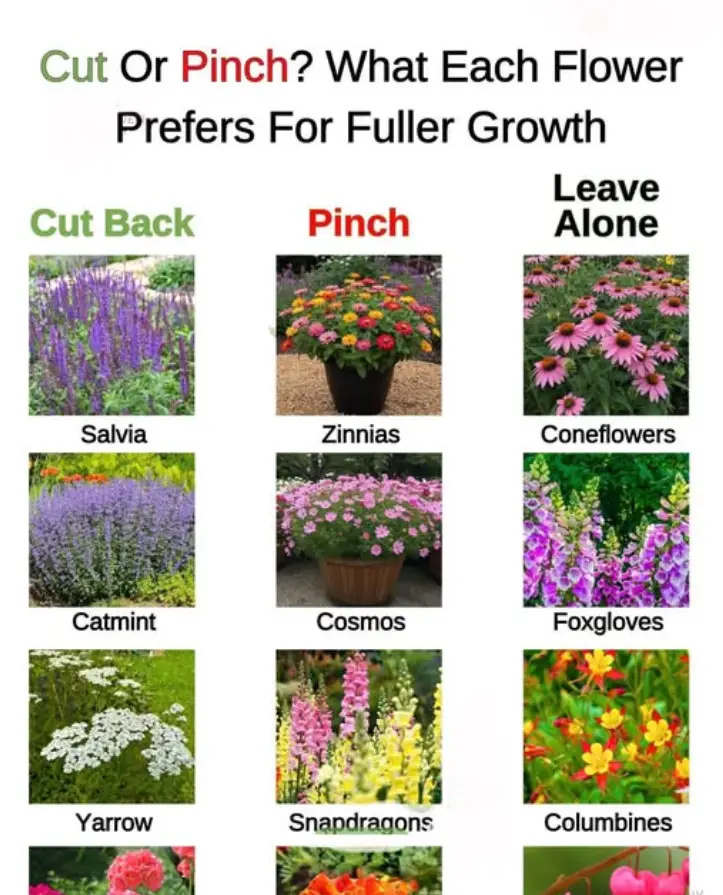When it comes to achieving lush, full-flowering plants, many gardeners—especially beginners—are unsure whether cutting back or pinching is the better route. While both methods stimulate new growth, choosing the correct technique for each plant type is essential for optimizing bloom cycles, plant shape, and overall health. Below, we present the ultimate guide to understanding and applying both techniques with confidence.
Why Choosing the Right Method Matters for Plant Health and Blooming
Pinching and cutting back share the common goal of encouraging bushier plants and enhanced blooming, yet they differ drastically in application and effectiveness depending on the plant type and growth stage. Selecting the right approach ensures:
- Stronger structural integrity
- Increased flower production
- Balanced plant energy use
- Resistance to flopping and legginess
Let’s break down the unique advantages of each method and match them to the most responsive flower varieties.
Pinching vs. Cutting: What’s the Real Difference?
What is Pinching?
Pinching is a subtle yet powerful method, usually done with your fingers. By removing the tender top growth—especially the central stem—just above a leaf node, we redirect the plant’s energy into lateral growth, resulting in compact, bushy habits and more flower-bearing stems.
This method is best suited to:
- Young, soft-stemmed annuals
- Plants in early vegetative stages
- Gardeners aiming for fuller shapes with abundant blooms
What is Cutting Back?
In contrast, cutting back involves using clean shears or pruners to remove mature stems or sections of a plant. This technique is more aggressive but is extremely effective for:
- Established perennials
- Triggering a second flush of blooms
- Rejuvenating plants post-flowering
- Enhancing overall longevity and vigor
Top 5 Flowers That Respond Best to Pinching
1. Zinnias
Pinch zinnias when they reach about 6 inches tall. Removing the central stem forces side branching, which leads to multiple flower heads per plant. Expect a continuous flush of vibrant blooms all summer long.
2. Cosmos
Pinching cosmos when they’re 8–10 inches tall prevents them from becoming leggy. This encourages a strong, bushy form that better supports flowers, especially under wind or rain stress.
3. Snapdragons
For snapdragons, pinch after they develop 4–6 true leaves. This promotes upright yet fuller growth, doubling the potential flower stems and enhancing the overall visual impact.
4. Marigolds
A must-pincher for summer gardens. Pinching early helps marigolds produce a dense canopy, ensuring non-stop blooming until frost hits. The more you pinch, the more they branch and flower.
5. Coleus
Though valued for its foliage, pinching coleus is crucial. It prevents premature flowering and supports continuous leaf development. Regular pinching also avoids the plant becoming too leggy or top-heavy.
Top 5 Flowers That Thrive After Cutting Back
1. Salvia (Perennial Varieties)
After the initial flowering, cut back salvia by half to promote vigorous reblooming in late summer. This technique rejuvenates the plant, resulting in fresh blooms and bushy growth.
2. Catmint (Nepeta)
Trim catmint right after its first bloom phase. A hard cut restores its shape and triggers a secondary bloom, often more compact and intense in color.
3. Yarrow (Achillea)
As flowers fade and brown, cut back yarrow to just above the foliage. This not only improves its appearance but frequently results in a modest second flush.
4. Geranium (Cranesbill)
Once flowering slows, cut geraniums back to 2–3 inches above the crown. Water and feed to stimulate rapid regrowth and a possible second bloom before season’s end.
5. Coreopsis
After early summer blooms, cut back by one-third. This resets the plant and encourages a flush of new flower buds, extending its blooming period well into late summer.
Plants That Dislike Both Techniques – Let Them Be!
While many flowering plants thrive with a bit of intervention, others prefer minimal disturbance:
- Coneflowers (Echinacea)
- Foxgloves (Digitalis)
- Bleeding Hearts (Dicentra)
- Columbines (Aquilegia)
These species naturally develop their form and self-regulate their energy use. Cutting or pinching often leads to reduced flowering or plant stress. The best approach here? Let nature do the work.
Additional Tips for Pinching and Cutting Success
- Always use clean tools to prevent disease spread.
- Pinch or cut just above a leaf node to guide proper regrowth.
- Apply during early morning or late afternoon to reduce stress on the plant.
- Feed after cutting to support energy recovery and growth.
- Time your interventions based on plant lifecycle and bloom patterns.
A Simple Rule of Thumb for Beginners
- For annuals and soft-stemmed varieties, lean toward pinching.
- For perennials or overgrown plants, cutting back yields better results.
- Observe how each species reacts. Some may even respond well to a mix of both techniques during different stages.
Conclusion: Pinch or Cut – The Choice is in Your Hands
The road to a vibrant, bloom-heavy garden is paved with informed decisions. While both pinching and cutting back are powerful tools in your gardening arsenal, choosing the right method for each flower ensures sustained beauty and health throughout the growing season.
Start experimenting. Keep track of your plants’ responses. Over time, you’ll develop an intuitive understanding of what each flower prefers—and your garden will thrive because of it.

